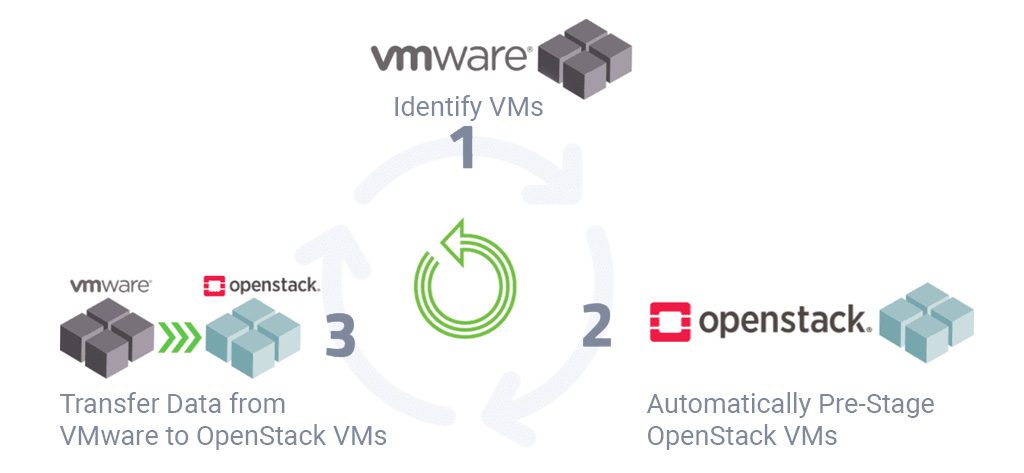In today's rapidly evolving IT landscape, organizations are increasingly seeking flexible, scalable, and cost-effective solutions to manage their workloads. As a result, many enterprises are migrating from traditional virtualization platforms like VMware to more open-source and cloud-native environments like the Red Hat OpenStack Platform. This article provides a detailed guide on how to successfully migrate from VMware to Red Hat OpenStack, highlighting the benefits, challenges, and key steps involved.
VMware has been a leader in virtualization technology for many years, providing robust solutions for managing virtual machines and data centers. However, as organizations move towards cloud-native and open-source platforms, Red Hat OpenStack has emerged as a powerful alternative. Red Hat OpenStack is an open-source cloud computing platform that allows enterprises to build and manage private and public clouds.
Migrating from VMware to Red Hat OpenStack involves careful planning and execution, but the benefits in terms of cost savings, scalability, and flexibility can be substantial.
Why Migrate to Red Hat OpenStack Platform?
Migrating to Red Hat OpenStack offers several advantages:
- Cost Efficiency: Red Hat OpenStack is open-source, reducing licensing costs associated with proprietary platforms like VMware.
- Scalability: OpenStack is designed for horizontal scalability, making it ideal for growing workloads.
- Flexibility: OpenStack supports a wide range of hypervisors, storage options, and networking configurations.
- Community Support: Being an open-source platform, OpenStack has a large community that contributes to its continuous improvement.
- Integration: Red Hat OpenStack integrates well with other Red Hat products, offering a cohesive environment for enterprise IT.
3. Key Considerations Before Migration
Before starting the migration process, it's essential to consider the following factors:
- Current Infrastructure: Assess your existing VMware infrastructure, including virtual machines, storage, and networking configurations.
- Compatibility: Ensure that your workloads and applications are compatible with the Red Hat OpenStack environment.
- Skill Set: Evaluate the expertise of your IT team in managing and operating OpenStack.
- Downtime: Plan for potential downtime during the migration process and communicate this to stakeholders.
- Data Migration: Develop a strategy for migrating data from VMware to OpenStack, including backups and replication.
4. Migration Process Overview
Migrating from VMware to Red Hat OpenStack involves several key steps:
1. Assessment and Planning: Evaluate the current VMware environment, define the migration scope, and create a detailed migration plan.
2. Environment Preparation: Set up the Red Hat OpenStack environment, including the installation and configuration of necessary components.
3. Data and VM Migration: Migrate virtual machines, data, and workloads from VMware to OpenStack.
4. Validation and Testing: Ensure that all migrated resources function correctly in the new environment.
5. Optimization and Tuning: Optimize the OpenStack environment for performance and reliability.
6. Go-Live and Monitoring: Switch over to the OpenStack environment and monitor for any issues.
5. Detailed Migration Steps
Here’s a more detailed look at each step in the migration process:
Step 1: Assessment and Planning
- Conduct a comprehensive audit of your current VMware environment, documenting all virtual machines, networks, and storage.
- Define the goals of the migration, including any specific requirements or constraints.
- Create a migration timeline, accounting for resource availability, potential risks, and contingency plans.
Step 2: Environment Preparation
- Deploy the Red Hat OpenStack Platform, ensuring that the underlying hardware meets the necessary requirements.
- Configure the OpenStack components, such as Nova (Compute), Neutron (Networking), and Cinder (Block Storage).
- Set up networking and security policies in the OpenStack environment to mirror those in VMware.
Step 3: Data and VM Migration
- Use migration tools or scripts to export VMs from VMware and import them into OpenStack. Tools like **Red Hat CloudForms** can help automate parts of this process.
- Ensure that data integrity is maintained during the migration. This may involve replicating data or using storage migration tools.
Step 4: Validation and Testing
- After migration, perform thorough testing to ensure that all VMs, applications, and services are functioning as expected in OpenStack.
- Validate that performance benchmarks are met and that networking configurations are correct.
Step 5: Optimization and Tuning
- Fine-tune the OpenStack environment for optimal performance. This may involve adjusting compute resource allocation, optimizing storage, and refining network settings.
- Monitor the environment for any bottlenecks or issues that need addressing.
Step 6: Go-Live and Monitoring
- Once testing is complete, transition the environment to production. Monitor the environment closely during this phase to quickly address any issues that arise.
- Implement ongoing monitoring and maintenance practices to ensure long-term stability and performance.
Challenges and Best Practices
Migrating from VMware to Red Hat OpenStack can be complex, and there are several challenges to consider:
- Compatibility Issues: Some VMware-specific features may not have direct equivalents in OpenStack.
- Skill Gaps: Ensure that your IT team is trained in OpenStack management to avoid operational disruptions.
- Data Migration: Migrating large volumes of data can be time-consuming and may require specialized tools.
Best Practices:
- Pilot Migration: Start with a small subset of VMs and data to test the migration process before scaling up.
- Documentation: Keep detailed documentation of the migration process, including any issues encountered and how they were resolved.
- Engage Experts: Consider hiring consultants or working with Red Hat directly for a smoother migration process.
7. Conclusion
Migrating from VMware to Red Hat OpenStack is a strategic move for organizations looking to embrace open-source, cloud-native technologies. While the process requires careful planning and execution, the benefits in terms of cost savings, flexibility, and scalability make it a worthwhile investment. By following the steps outlined in this guide and addressing potential challenges proactively, your organization can successfully transition to the Red Hat OpenStack Platform and enjoy a more agile and efficient IT environment.





Comments